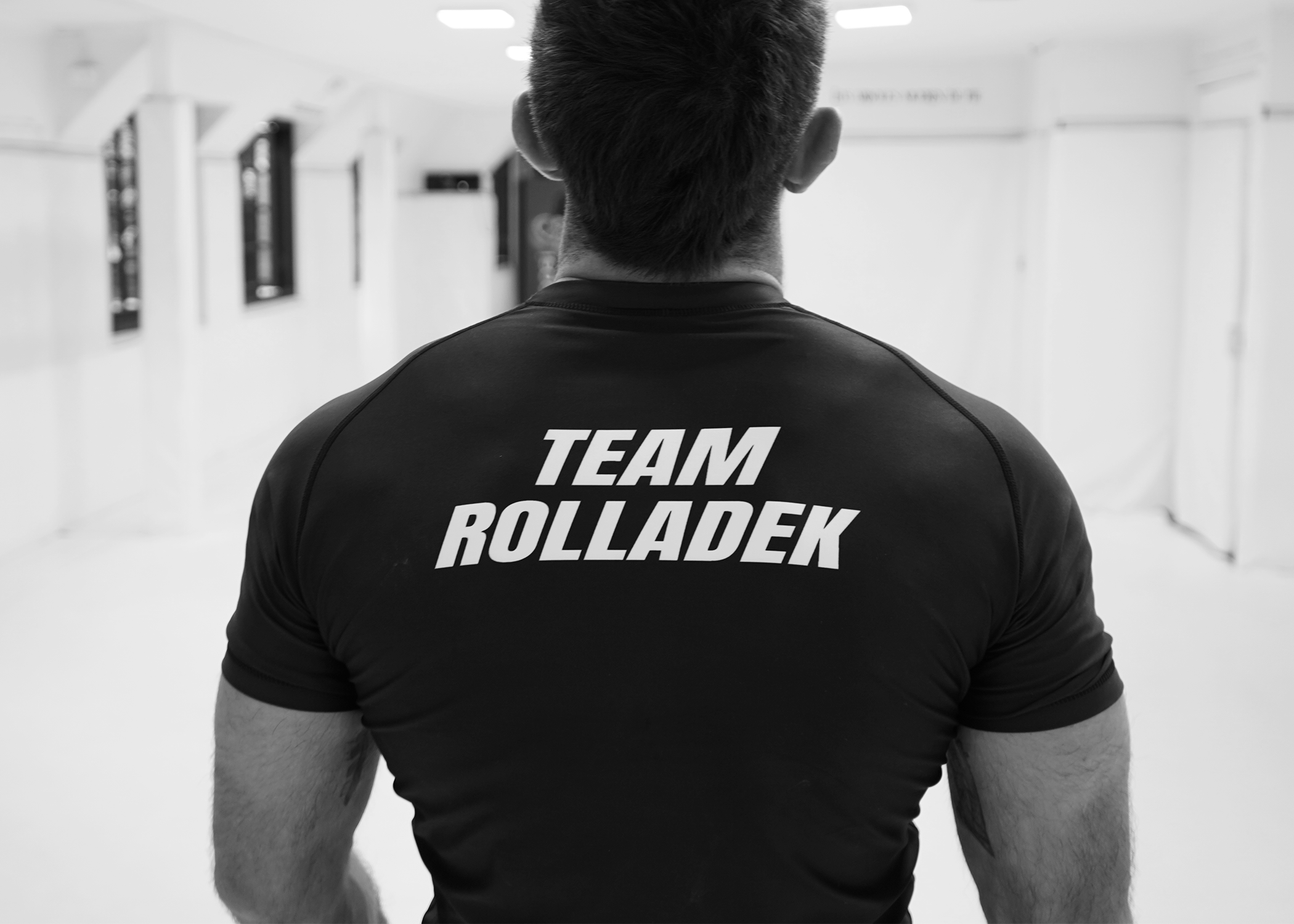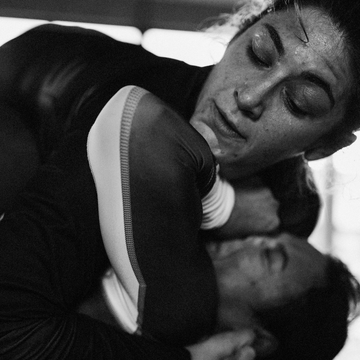Rolladek Tips


TECHNIQUE CORNER
5 Grip Exercises WITH PROFESSOR BYERS
Repeat for 4 sets of 10
DISC GRIP WITH A PLATE
Hold a weighted plate (5–25 lbs depending on level) between your fingers and thumb like you're pinching it. Keep your arm extended or slightly bent and hold for time (30–60 seconds). Builds static pinch strength and endurance — perfect for sleeve and collar grips.
DUMBBELL GRAB AND TWIST
Grab the head of a heavy dumbbell (not the handle) with one hand. While holding it tightly, twist the wrist back and forth slowly. Do for reps or time. Trains forearm rotation, wrist stability, and raw grip control — ideal for breaking posture and keeping grips.
SPINDLE GRAB WITH BAND + KETTLEBELL
Loop a resistance band through a kettlebell handle, then grab the band itself like you’re holding a thick lapel. The kettlebell will swing and shift, forcing your grip to adjust constantly. Do farmer’s carries or holds. Builds reactive grip strength and simulates unpredictable grip exchanges.
PISTOL GRAB WITH KETTLEBELL
Hold a kettlebell handle in a “pistol” grip (thumb over the top, fingers under). Squeeze tightly and hold the bell vertically for time or reps. Builds crush grip strength and mimics lapel grips and strong sleeve control under tension.
PLANK BELT WITH KETTLEBELL
Set up in a plank position. Loop a belt under a kettlebell and hold both ends of the belt with one hand (or each hand for added difficulty). Stay steady and resist the swinging weight. This challenges your grip, core stability, and shoulder strength all at once.
Warm up circuit with professor rena
Repeat for a set time, usually 1 minute, before switching top to bottom.
PUMMEL FEET
The bottom person is on their back with legs up in open guard. The top person pummels their feet in and out of this guard, aiming to mimic guard passing and improve position. This enhances the top person's agility, control, and leg positioning, crucial for effective guard engagement and passing.
KNEE ON BELLY PASS the bottom person is on their back in a guard position. The top person pushes the bottom's knees to their chest, then pulls away to create space. This allows the top person to quickly pass to one side and establish a knee on belly position, improving control, creating openings, and facilitating smooth transitions.
POST HEAD ON MAT AND JUMP OVER BODY
The top person places hands on the mat and positions their head inside near the bottom person's body for control. They then explosively jump over the bottom's torso, clearing the guard, and repeat for a set time. The drill focuses on enhancing agility, speed, coordination, and quick transitions.
mental corner

Mental tips
REPEAT DAILY FOR BEST RESULTS
STAY CALM UNDER PRESSURE
Breathe. Slowing your breath slows your heart rate and helps you think clearly... especially when stuck in bad positions. Survival starts in the mind.
LET GO OF YOUR EGO
Tapping doesn’t mean failure, it means learning. Stop chasing wins at the gym. Roll to improve, not impress. Your progress will skyrocket.
FOCUS ON ONE THING
Go into every session with a single goal: a sweep, grip, guard pass. Narrow focus = better retention. Random rolling = random results.
VISUALIZE SUCCESS (AND CHAOS)
Picture yourself escaping bad positions and hitting your A-game under pressure. If you can see it in your mind, you’re already training your body to follow.
STAY CONSISTENT, NOT PERFECT
You won’t feel amazing every day. Show up anyway. Discipline beats motivation. Brick by brick...that’s how you build a savage mindset.
Diet corner

5 BJJ DIET TIPS TO FUEL TRAINING AND RECOVERY
REPEAT DAILY FOR BEST RESULTS
EAT ENOUGH PROTEIN
Aim for at least 1 gram of protein per pound of bodyweight. This supports muscle repair and recovery after hard rolls. Go for lean meats, eggs, Greek yogurt, protein shakes, and fish.
FUEL WITH CLEAN CARBS
Your body needs energy to train hard. Include rice, oats, fruit, sweet potatoes, or quinoa around training times to keep intensity high and avoid crashing.
HYDRATE HARD
Drink at least 3 liters of water daily, more if you’re sweating heavily. Add electrolytes to stay sharp and prevent cramping, especially during long sessions or weight cuts.
EAT BEFORE AND AFTER TRAINING
Have a light, carb-focused meal 1–2 hours before training. Afterward, refuel with protein and carbs within 60 minutes to jumpstart recovery.
AVOID JUNK ... MOST OF THE TIME
You don’t have to be perfect, but processed food, sugar, and fried stuff will slow you down. Prioritize whole foods and consistent meals to keep your energy steady and your weight stable.


